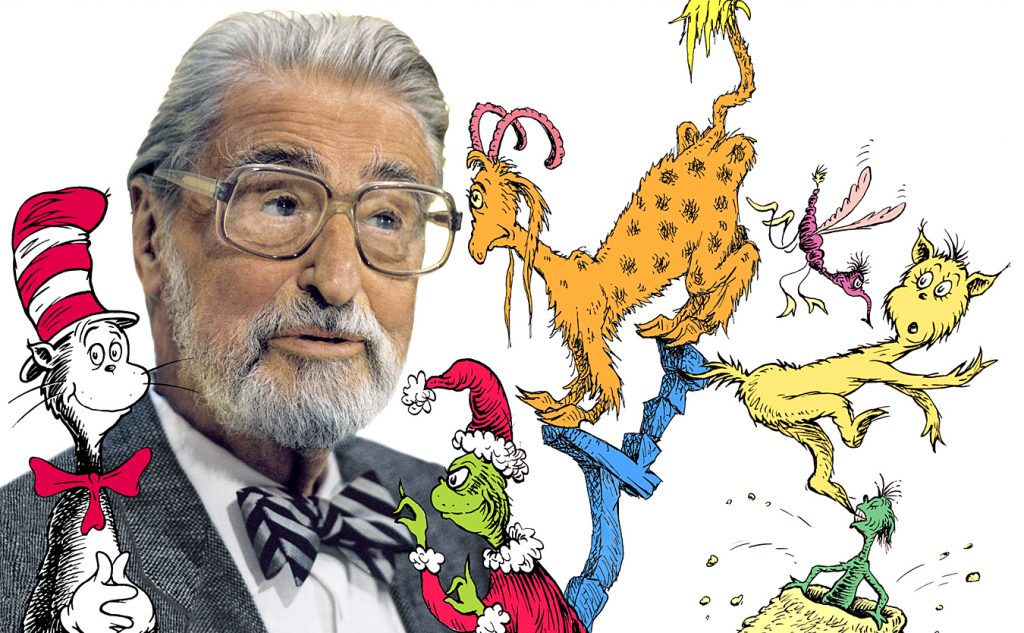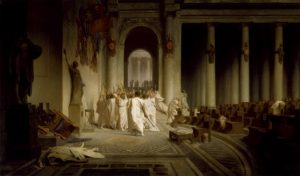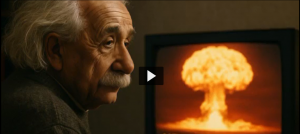Theodor Geisel, beloved children’s author, had a life before he put the hat on the cat. Born March 2, 1904, in Springfield, Massachusetts, Geisel was the only son of German-born immigrants. He spent a normal childhood with his sister and parents, before going to college to become a teacher. Geisel dropped out of college shortly before completing his doctorate in literature. He would eventually turn his almost doctorate and his mother’s maiden name into his now famous pen name, Dr. Seuss.1

In 1927, Geisel decided to turn his passion for drawing and writing into a career in advertising. One of his early successes in advertising was his drawing for Flit insecticide, whose mascot looked very similar to the cat that would eventually wear a striped hat.2 He later created an entire campaign for Essomarine Oil, a division of Standard Oil, called Seuss Navy, in which he designed certificates of membership, pamphlets, and even ashtrays and cocktail glasses that were passed out at trade shows. The Seuss Navy ads ran from 1936 to 1941, and contained many of the sea creatures that would later appear in his books.3 Geisel used many of his made up creatures in various ad campaigns and was the first person to use humor to sell products, altering the advertising industry.4

In 1941, Geisel left advertising to work as a political cartoonist for liberal New York newspaper PM. He drew over 4oo cartoons targeting such topics as isolationism, antisemitism, and racism. He routinely mocked Hitler and Mussolini, but he had a particular flair for attacking American nationalism as well. Believing that the American Nationalist Movement was just another form of fascism, Geisel made Charles Lindbergh a frequent subject of his cartoons.5 After the Japanese attack on Pearl Harbor, Geisel began to use his cartoons to support the war against Japan. He drew cartoons that “depicted Hideki Tojo, the Prime Minister and Supreme Military Leader of Japan, as an ugly stereotype, with squinting eyes and a sneering grin.”6 Geisel was in support of Japanese internment camps and drew several cartoons about them.

It can be hard to imagine that Dr. Seuss could be a racist in his depiction of Asians, but he later admitted that this was exactly the case. At the time, PM did not receive one letter of complaint about Geisel’s stereotypical depiction of Asians, although they received many letters when Geisel mocked the German dachshund, which was popular among American dog owners. Dr. Seuss later said that his 1954 book, “Horton Hears a Who,” written after a trip to Japan and dedicated to a Japanese friend, is meant to be an apology to the Japanese people for his depictions of them during World War II. In the 1980’s, Geisel looked through all his children’s books and removed anything he felt was racist, changing them for any future publication.7
Geisel’s political cartoons ended when he joined the Army in 1943. The now Captain Geisel was assigned to a unit that made training films for the Army, working with the likes of Stan Lee (creator of super heroes) and Chuck Jones (creator of the Road Runner and Wile E. Coyote).8 Geisel and Jones would become life long friends and would work together on various projects, including the animated “How the Grinch Stole Christmas,” which is still shown every year on television.

Geisel’s first children’s book was “And to Think I Saw It on Mulberry Street,” and was published in 1937. However, his writing career almost never happened. The book had been turned down by 27 publishers and Geisel was ready to give up the idea of becoming a children’s author when he ran into an old college friend while walking down the street. His friend had recently become an editor at Vanguard Press and asked Geisel to send him the book so he could show his boss. Geisel would later say in interviews that it was pure luck that he walked down that side of the street that day.9
Dr. Seuss later claimed that he did not like to write books that had a moral or ethical lesson, because children could see a lesson coming and would not want to read the book.10 However, all of Geisel’s books, except his Beginner Books, contained lessons of some sort. Dr. Seuss wrote books with lessons on environmentalism, racial equality, the pointlessness of the arms race, materialism, and respect, just to name a few. He was one of the first children’s authors to write books for children with the respect and care typically reserved for adult literature.11
Dr. Seuss died on September 24, 1991 at his home. He was asked shortly before he passed away to leave a message for children. He wrote “The best slogan I can think of to leave the kids of the U.S.A. would be ‘We can…and we’ve got to…do better than this.’ He then crossed out ‘the kids of.'”12 Dr. Seuss left a legacy of children’s literature that will not soon be forgotten, but he did more than that; Dr. Seuss taught children to think.
- Janet Schulman and Cathy Goldsmith, Your Favorite Seuss (New York: Random House, 2004), 6. ↵
- Louis Menand, “Cat People,” The New Yorker (December 2002). ↵
- Janet Schulman and Cathy Goldsmith, Your Favorite Seuss (New York: Random House, 2004), 55. ↵
- Janet Schulman and Cathy Goldsmith, Your Favorite Seuss (New York: Random House, 2004), 117. ↵
- Sophie Gilbert, “The Complicated Relevance of Dr. Seuss’s Political Cartoons,” The Atlantic (January 2017). ↵
- Sophie Gilbert, “The Complicated Relevance of Dr. Seuss’s Political Cartoons,” The Atlantic (January 2017). ↵
- Sophie Gilbert, “The Complicated Relevance of Dr. Seuss’s Political Cartoons,” The Atlantic (January 2017). ↵
- Janet Schulman and Cathy Goldsmith, Your Favorite Seuss (New York: Random House, 2004), 9. ↵
- Louis Menand, “Cat People,” The New Yorker (December 2002). ↵
- Janet Schulman and Cathy Goldsmith, Your Favorite Seuss (New York: Random House, 2004), 190. ↵
- Janet Schulman and Cathy Goldsmith, Your Favorite Seuss (New York: Random House, 2004), 84. ↵
- Janet Schulman and Cathy Goldsmith, Your Favorite Seuss (New York: Random House, 2004), 190. ↵



125 comments
Erin Vento
That was a really fantastic article!!! I never really thought that Dr. Suess was anything more than everyone’s favorite childhood author, but wow! I had no idea his life before becoming an author was so full, or that he had ever taken such strong political stances- good and bad ones. It’s so good to know he made up for the wrongs in his life in the end and wanted to write books for children with the same amount of respect writers for adults write with.
Blanca Martinez
Everything I read in this article was quite surprising. I had no idea about many of these details in Dr. Seuss’ life. If I am being honest, I did not expect him to have been in the army or to have drawn political cartoons before finally getting to children’s books. Also it was quite hard to believe he at some point in his life was racist but then again his time period is completely different from mine. The struggle must have been hard when he tried publishing his first children’s book but I’m glad he got the chance, if not most of the kids today wouldn’t be able to think outside of what they know into other issues.
Tara Sellers
I did not know Dr. Seuss’s real name was Theodor Geisel. I wonder why he did not finish his doctorate and then start doing cartoons. Instead he dropped out when he was so close. If he had gotten his doctorate then he could have had something to lean on if the cartoons had failed. However, he did teach kids important lessons that they don’t always see.
Maria Callejas
Awesome intro! I love your play on words and your Cat in the Hat reference. I really enjoyed your fact ridden writing, using great evidence throughout. Particularly when you mention how Dr. Seuss was the first creator to use humor to sell products. It is interesting to see how Theodor Geisel was a political cartoonist before conquering the children’s book world, and how success in that field was something hard to accomplish. But of course, he did, and what a legacy has he left us. Great take on one of America’s favorite authors!
Mario Sosa
The telling of Dr. Seuss’ (or should I say Theodor Geisel?) life surprised me throughout the entire article. I think it is incredible how Dr. Seuss got to work with Stan Lee and Chuck Jones during World War II. Spending my early childhood reading Dr. Seuss books, it’s hard to imagine Hitler or Mussolini in a Dr. Seuss cartoon! There is much more to Dr. Seuss’ life work than him just simply making children’s books. Amazing article, job well done!
Matthew Rios
To think, Theodor Geisel really was a great children’s author. The subtext of his books are lined with wonderful messages for children. I came into this article expecting to learn his tales were filled with something devious, but I learned quite the opposite. His past is not something to condemn from some moral high horse. Given the context of his time period, the cartoons, and beliefs he had created were of a normal nature. It’s nice to know he was truly just a man trying to make his living, and did it serving children wonderful literature.
Amanda Figueroa
I absolutely loved reading this article. I barely realized how I never knew how Dr. Seuss came to be. It’s very interesting to read that he let his passion spark his career and began in advertising. It was very well written how you explained Dr. Seuss’s racism towards Asians and I also never knew he was in the army. This article was very informative and I for sure learned something new.
Ashley Tumlinson
Reading this article really brought to light what most people overlook – themes. As a child, I loved the pictures and rhyming words of Dr.Seuss’s works, but if I were to read these works now and actually dissect them, I might find a very important lesson within the reading. I always thought of Dr.Seuss as a child icon – but understanding his works more in depth made me realize he was often misinterpreted when it came to his work.
Oceane Roux
This article was a shock to me as I had no idea about the depth of his life. The idea that Dr. Seus, a famous children’s author, was a military cartoonist that progressed hate against an entire race is almost unbelievable! It was awesome to read about the unknown accomplishments of a man with such a diverse and long-lived career that has continued to thrive, even after his death.
Marco Picardo
I have heard stories of Dr. Suess being racist, but I never knew the extent of his content. Being part Japanese reading his support for concentration camps was troubling to say the least. I also found his images depicting Japanese as offensive. This article changed my whole view of Dr. Suess, now I cast a negative light on him.